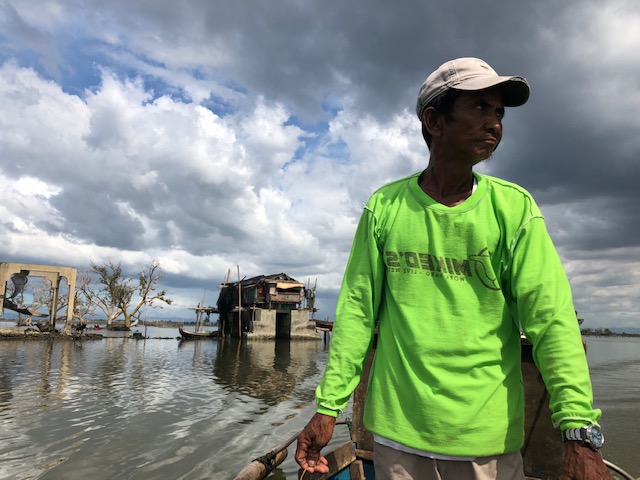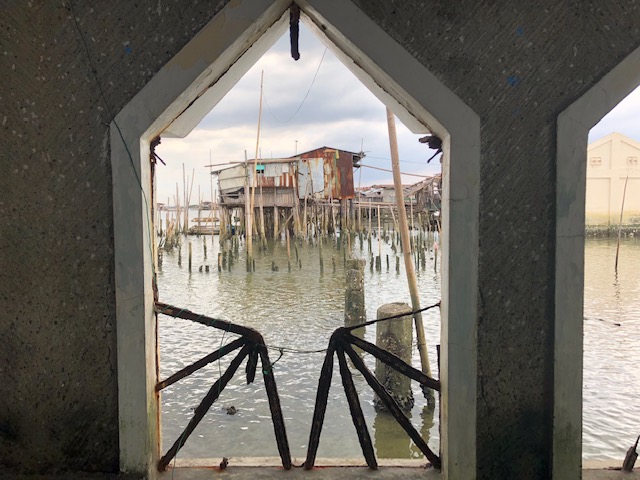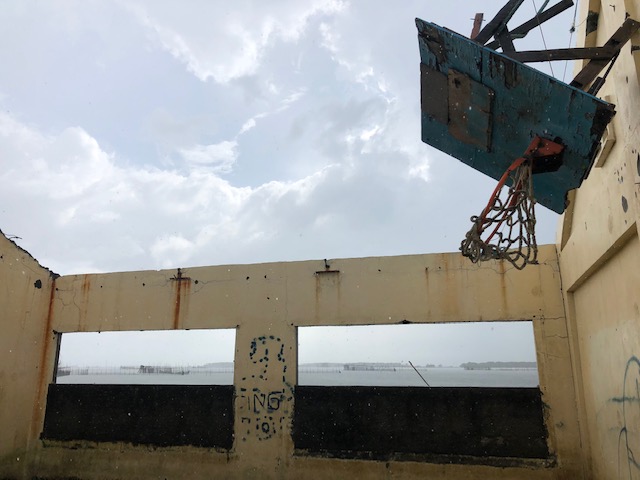A once-thriving island fishing village in Bulacan is now nearly fully submerged in the sea. Vanishing land has become an increasingly common phenomenon in many Philippine coastal areas. But, as Howie Severino writes, this phenomenon is not being caused by climate change.
By HOWIE SEVERINO, GMA News
November 30, 2018
SITIO PARIAHAN, BULACAN – As the sea level rises, the coastal land around Manila is sinking by an even faster rate. That's one conclusion from our new documentary, "Ang Islang Walang Lupa," an environmental mystery story.
A once-thriving, lush island fishing village in Bulacan is now nearly fully submerged in the sea. The villagers wonder why and have various theories, none of them correct.
Their village, Sitio Pariahan, now has just slivers of land, barely enough to step on. Vanishing land has become an increasingly common phenomenon in many Philippine coastal areas. But this rapid encroachment of the sea is not being caused by climate change, as some surmise.
Climate change is real and threatens the planet. Rising awareness of it, however, has posed another danger – it's become easy to blame climate change for the permanent flooding in many coastal areas around Metro Manila. And there's not much Filipinos can do to stop or even slow down climate change. Blaming climate change can induce helplessness.
In truth, climate change is causing the sea to rise by millimeters per year, yet the waters in places like Sitio Pariahan are rising by centimeters and at least ten times faster. There must be another reason for the permanent deluge.

As confirmed by studies of Manila Bay by earth scientists, the flooding that won't go down is being caused primarily by "land subsidence," the sinking of land due to the overuse of groundwater.
“The Philippine public and the country’s decision-makers have become aware that global warming is raising the world’s oceans by one to three millimetres per year (Intergovernmental Panel on Climate Change, 2001),” write the scientists Kelvin S. Rodolfo and Fernando P. Siringan.
“Most sectors of the government, though, are oblivious to, or ignore, the fact that groundwater overuse is causing the plains around northern Manila Bay to subside more than 10 times faster—by centimeters and even more than a decimeter per year.”

Underground supplies of water help support the earth above, which becomes destabilized when powerful pumps suck out huge volumes of water over time.
That's what happened in Sitio Pariahan, formerly the home of large fishponds which made their owners wealthy. Ultimately, the overpumping of groundwater destroyed the community, driving away most residents and turning valuable real estate into water world.
We saw the somber ruins of the local church and school, the center of a busy network of islet communities in Manila Bay.

It’s the classic pursuit of short-term profits at the expense of nearly everything else, not least a happy island way of life. Land subsidence made property cheaper for San Miguel Corporation which bought over 2000 hectares here for a massive airport project, whose environmental impact still has not been studied.
Climate change may be beyond the control of Filipinos, although we can prepare for its worst effects. But overpumping of water is a local sin and can be stopped to save other coastal and island communities.
Much like saying man-made disasters are God's will, reflexively attributing solvable problems to climate change is an excuse for not doing anything.

In-depth special reports and features showcasing the best multimedia storytelling from GMA Integrated News.